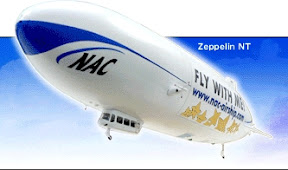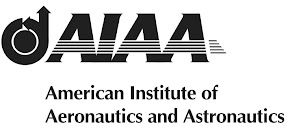
Back in June we had an article about the Zeppelin of the
Nippon Airship Corporation in Japan and that it
will soon be offering sightseeing flights. Well this soon is now. Currently the Zeppelin NT number 2 operates in Tokyo you can check out the completely reworked japanese
Website of NAC or take a look at the
autotranslated english version. Most interesting might be the tours that are offered from November 23rd to January 5th over Tokyo if you are interested in a flight check out the special
Cruise website and in case you don't read Japanese the
auto translated version. If we decipher the Japanese correctly the prices range from 126,000 Yen to 168,000 Yen per flight which is 757,- to 1010,- Euros. The flights range from 90 Minutes to 2 hours. If you compare these prices to those charged by the
Deutsche Zeppelin Reederei who charge 545,- Euros for a 90 Minute flight and 715,- Euros for the 2 hour tour the prices are higher but you always have to compare it with the local economy so you can really say it's more expensive for those who live there but if you are traveling from somewhere else in the world you might think about going to Japan if you want to budget. IF your Japanese skills are better than ours, it would be great if you could help us a bit understanding what else is said on those websites.
For the rest of us NAC also has only
Englisch Website which mainly focuses on a Company presentation rather than the current operations.
I would like to thank
aerocrat for his great Russian Airship blog he wrote about the current
NAC operations (
English translation here) and gave me a heads up. Also I want to thank our great auto translation service
WorldLingo who provide us with this great service. If you have to translate something on the web check them out at
http://www.worldlingo.com/. Also I want encourage everyone who has not yet subscribed to the blog to do so, just use the links in the sidebar where it say "Subscribe to Airshipworld" also please leave us comments and email us. Send us your airship news stories that you have discovered.
 The Varialift Airship is a new concept for an Airship with a variable lift system, developed and invented by Alan Handley. The variable lift, will make ground handling of this airship a lot easier. We first reported about Varialift back in April 2007 with the Varialift Website announcement and a look at his Varialift patent application today we get the chance to give you a little update as to what has been going on. Mr Handley was so kind and shared this press release with us.
The Varialift Airship is a new concept for an Airship with a variable lift system, developed and invented by Alan Handley. The variable lift, will make ground handling of this airship a lot easier. We first reported about Varialift back in April 2007 with the Varialift Website announcement and a look at his Varialift patent application today we get the chance to give you a little update as to what has been going on. Mr Handley was so kind and shared this press release with us.





